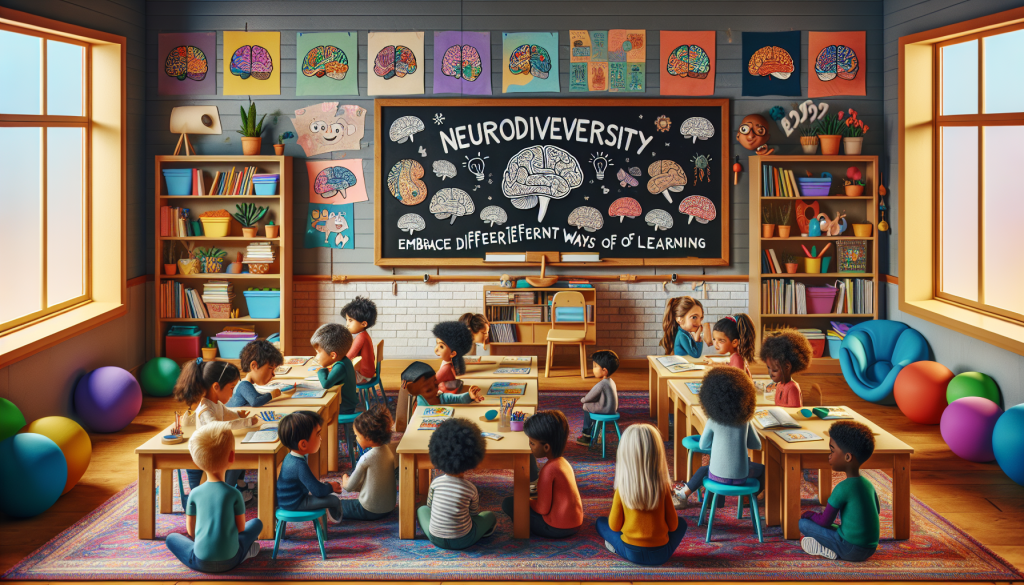
The Neurodiversity Movement: Embracing Different Ways of Learning
The Neurodiversity Movement: Embracing Different Ways of Learning
In recent years, the term “neurodiversity” has gained popularity as a movement that supports and celebrates the unique ways in which individuals learn. Gone are the days where neurodiversity was seen as a disorder or weakness; instead, it is now recognized as a valuable and essential facet of human diversity. From ADHD and dyslexia to autism and Tourette’s syndrome, neurodiversity encompasses a broad spectrum of neurological differences that impact the way individuals process information, think, and learn. In this article, we will delve into the neurodiversity movement and explore how embracing different ways of learning has the power to benefit individuals and our society as a whole.
What is Neurodiversity?
Neurodiversity is a term that was first coined by sociologist Judy Singer in 1998. It refers to the natural and normal variation of neurocognitive functioning within the human population. In other words, it recognizes that every individual’s brain is uniquely wired, and this wiring influences the way they perceive the world and learn from it. This diversity of neurocognitive functioning extends beyond intelligence and academic abilities; it includes communication styles, sensory processing, and social interaction.
Neurodiversity differs from the traditional medical model of viewing neurodivergent conditions as disorders to be treated and cured. Instead, it embraces the idea that neurodivergent individuals are not broken, but rather have different ways of thinking, learning, and experiencing the world. This perspective shifts the focus from trying to change or fix an individual to accepting and accommodating their differences.
The History of the Neurodiversity Movement
The neurodiversity movement grew out of the disability rights movement in the 1980s and 1990s. It aimed to challenge the societal norms that viewed individuals with disabilities as inferior and strive for their rights to be accepted and accommodated for who they are. In the early 2000s, the neurodiversity movement gained momentum with the rise of the internet, allowing individuals to connect and advocate for themselves and others.
Today, the neurodiversity movement has evolved to encompass a broader range of neurodivergent conditions, including mental health conditions, such as depression and anxiety. It advocates for the understanding and acceptance of neurodivergent individuals while fighting against the stigmas and discrimination that they face within various aspects of society, from education to the workplace.
The Benefits of Embracing Neurodiversity
The neurodiversity movement is not only about promoting acceptance and reducing stigma; it also highlights the contributions that neurodivergent individuals can bring to society. Historically, many famous and successful people, such as Albert Einstein and Steve Jobs, were believed to have had neurodivergent conditions, highlighting the unique strengths and talents that can come from thinking differently.
Moreover, in a world where technological advancements and innovation are highly prized, embracing neurodiversity can bring new perspectives and approaches to problem-solving. Individuals with conditions like ADHD and autism can bring a hyper-focus and attention to detail that can be valuable in fields such as science, technology, and engineering.
Challenges and Future of the Movement
While the neurodiversity movement has made significant progress in raising awareness and promoting acceptance, there is still much work to be done. The education system, for example, often struggles to accommodate and support the diverse needs of neurodivergent students, leading to academic and social challenges.
The workplace is another area where neurodivergent individuals face barriers, from prejudice to a lack of understanding and accommodations. However, there is hope for the future as companies and organizations are recognizing the value of diversity, including neurodiversity, and are implementing strategies to foster an inclusive work environment.
In Conclusion
The neurodiversity movement has come a long way in promoting acceptance and understanding of individuals with neurodivergent conditions. It celebrates the unique ways of learning and thinking and advocates for equal rights and opportunities for all individuals. By embracing neurodiversity, we can promote a more inclusive and diverse society where everyone is valued for their differences and unique strengths. It is time to embrace neurodiversity and recognize that being different is not a weakness but a valuable strength that enriches our world.
